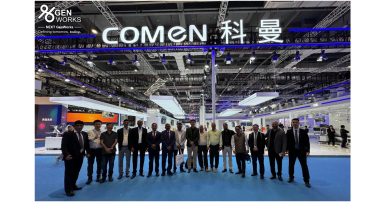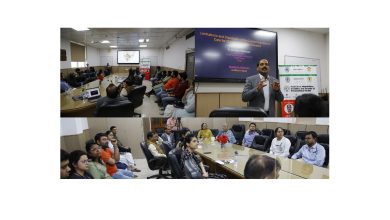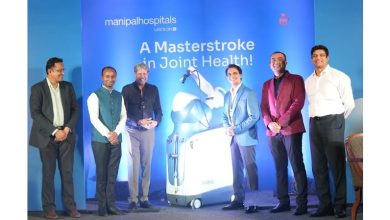41% of Delhi & NCR Population Tested Positive for Severe Heavy Metal Toxicity

- According to a survey, conducted by Daivam Wellness, a whopping 41% of the Delhi and NCR population found to be suffering from severe heavy metal toxicity, indicating extremely high levels of air and soil pollution, food contamination, plastic usage etc., in the region
- Pollution is one of the major reasons for increasing metal toxicity in human body
4th November 2019, New Delhi/NCR: The survey run by Daivam Wellness to find out the metal toxicity in the people of Delhi NCR revealed shocking results. Out of 165 patients, 68 patients were found positive for some kind of severe metal toxicity, making up for an alarmingly high figure of 41%. Aluminum, Mercury, Lead, Arsenic, Cadmium etc. were the most commonly found metals in these patients.
The effects of heavy metal toxicity: Aluminium: Alzheimer’s disease and kidney disease1. Reference:
Mercury: Tremors, insomnia, memory loss, neuromuscular effects, headaches and cognitive and motor dysfunction2.
Cadmium: Cancer and organ system toxicity such as skeletal, urinary, reproductive, cardiovascular, central and peripheral nervous, and respiratory systems3.
Lead: causes anemia, weakness, kidney and brain damage
The result is extremely concerning given the fact these metallic elements are now well established as systemic toxicants that stimulate multiple organ damage and lead to serious health issues1.
The Survey was done over the period of 6 months from May 2019 to October 2019 covering people from age group of 20 to 65 years.
Diseases linked to heavy metal toxicity are cancer, congenital defects and adverse pregnancy outcomes. It also leads to Chronic Kidney diseases, multiple sclerosis, arthritis, cardiac diseases, infertility and epilepsy.
“Along with contaminated food, medicines, plastic wares, high level of environmental pollution – especially air, soil and water, has increased the exposure of heavy metal. While even before running the test, we knew that people living in Delhi NCR, one of the most polluted areas of the world, will have some metal toxicity, but the final result surprised us. 41% is a way too high figure and certainly calls for emergency measures,” says Dr. Alok Chopra, Medical Director Daivam Wellness.
Children are most affected by environmental toxins as their exposure to even low concentrations during intrauterine and early childhood can result in lifelong physical and/or mental disabilities.
According to the Lancet Commission on Pollution and Health contaminated water, air and soil are responsible for about nine million early deaths, which is about 16% of global deaths. About 92% of these early deaths due to environmental toxicity occur in low and middle-income countries which includes India.
In recent times, to establish reasons for some chronic illnesses few countries have started running metal toxicity tests. However, despite extremely high levels of pollution and exposure to metal toxicity, this diagnostic approach is yet not established in India.
It is important to know here that while metal toxicity could be responsible for some serious illnesses, they are also responsible for a sudden spur in health complications, ranging from infertility to neurological disorders. This makes it very important for people to know whether they are affected by metal toxicity and get the required treatment.
Dr Chopra urged that if someone is having symptoms like muscle or joint pain, headache, mood swings, persistent tiredness, constipation, diarrhoea, abdominal pain, poor immunity, unexplained hair loss and skin problems, frequent deep seated allergies or illness is worsening without any reason then he or she should consider a metal toxicity scan.
“To detect metal toxicity, we use OLIGOSCAN, a device that gives the real-time percentage of metals like Mercury, Magnesium, Iron, Aluminium Lead and other minerals that are present in the body such as Calcium, Magnesium and Zinc. The OligoScan technology utilizes spectrophotometry to make a quick and precise analysis of the trace elements and heavy metals present in the tissues. The test is very simple, quick and very accurate,” explains Dr Chopra.
Once the metal toxicity is established, treatment is suggested depending on the type and degree of toxicity. Chelation therapy is one of the most common lines of treatment for heavy metal toxicity. Lately, newer and more effective options like Hyperbaric oxygen therapy(HBOT) is also being used to counter the effects of metal toxicity. HBOT is a high-pressure oxygen therapy that allows oxygen to diffuse and saturate more effectively in the blood system, primarily the plasma, which yields a positive physiological, biochemical and cellular effects.
With worsened air quality due to Diwali and winter-smog around the corner, heavy metal exposure is expected to increase in Delhi NCR region. The survey indicates the need for stricter measures to curb pollution and make people aware of the health hazards of metal toxicity and ways to keep themselves safe.
Reference: https://link.springer.com/chapter/10.1007%2F978-3-7643-8340-4_6




